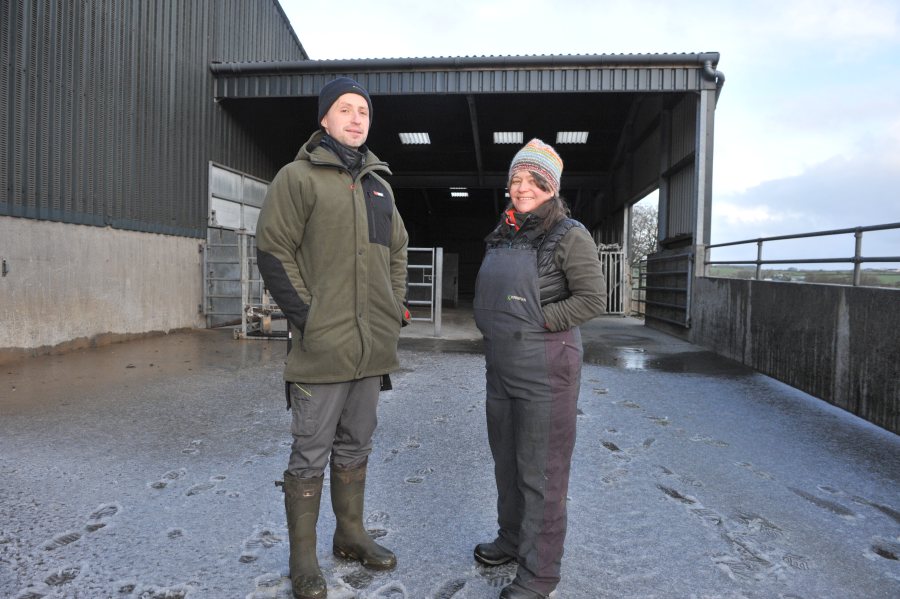
Good artificial insemination (AI) protocols are helping a Carmarthenshire dairy farm achieve a six week in-calf rate of more than 80%.
Iwan Francis runs a split block calving herd of 200 Friesian-cross cows at Nantglas, Talog, where he does his own AI.
Through the farm’s work as a Farming Connect demonstration site, Iwan has been working with vet Kate Burnby to improve herd fertility.
He has achieved this - reducing the 12-week empty rate from 14% to 5% within two and a half years and increasing six week in-calf rates from 71% to more than 80%.
During a recent open day at Nantglas, Kate explained that there are many factors that contribute to good herd fertility.
This includes calving records, disease status, AI protocols and heat detection, other factors taken into consideration are nutrition, cow comfort and handling systems.
Kate gave advice on best AI practice, including preparing the straw, flask management and good stock handling facilities.
Careful storage, handling and thawing of bull semen is an important consideration, she told farmers at the open day.
The farm has a specific area for AI preparations and management, which is kept clean and tidy at all times.
The site includes the flask, a whiteboard with bull placements map within the flask and plenty of area to handle the semen.
Further recommendations on semen handling include checking the semen tank is full of liquid nitrogen when delivered and checking levels twice weekly.
Farmers should check the tank for frosting on the outside neck of the tank twice a week as this indicates a breakdown of insulation.
They should also identify straws using coloured marker rods place in the goblets, or a similar system, and monitor water temperature continuously.
Heat detection collars have been a great asset to Iwan, being reliable and effective, which has helped maintain high submission rates with less effort than previously.
Iwan records all calving data, whether there are issues or not. Date includes cow condition when calving, calf detail, calving difficulty, cleansing, milk fever case and late calvers.
Reviewing these records have helped halved the amount and severity of metabolic disorders in the herd.
A handling system that doesn’t increase stress on the cow around AI is important. “The best way to maximise conception is to have a calm environment and good handling facilities," Kate advised.
Iwan has created a drafting system that provides a low stress environment as the cow drafted for insemination has access to silage and water and can see the rest of the herd when she is being held back for AI.
“‘Iwan does not normally need to yoke the cows as they usually stand quietly in the race," Kate explained.
What constitutes a good handling system is different for every farm, she said: “It might be head yokes, a race, a crush, each will work well as long as they are set up well and the cows are familiar with them.’’
For heifers, she recommends running them through the handling system ahead of AI to get them familiar with it.
She also recommends regularly review breeding data – comparing results and taking into account factors like the AI technician and bulls used on specific days, to see if there is scope for improvement.
“Consider a refresher course for technicians every two years or whenever there are concerns about results," she said.
